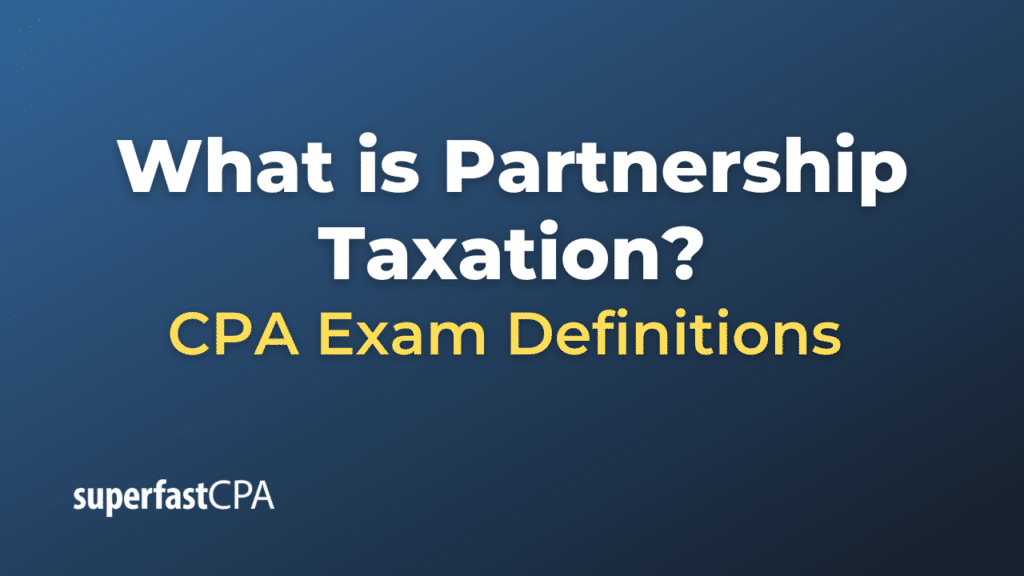Partnership Taxation
Partnership taxation refers to the way in which partnerships are taxed under the law. In many jurisdictions, including the United States, a partnership is a “pass-through” entity for tax purposes. This means that the partnership itself does not pay income tax. Instead, the profits or losses of the partnership “pass through” to the individual partners, who report their share of the partnership’s profits or losses on their own individual income tax returns.
Here’s a brief overview of how partnership taxation works in the U.S:
- Partnership Income: The partnership calculates its gross income, just like any business would. It then subtracts business expenses to arrive at the partnership’s net income or loss.
- Form 1065: The partnership must file an annual information return with the Internal Revenue Service (IRS) on Form 1065. This form shows the income, deductions, and credits from the business.
- Schedule K-1: After filling out Form 1065, the partnership provides each partner with a Schedule K-1. The Schedule K-1 shows each partner’s share of the partnership’s profits, losses, deductions, and credits.
- Partners’ Individual Returns: Each partner then reports the information from their Schedule K-1 on their own personal tax return, using Form 1040. The partners will pay tax on their share of the partnership income at their individual tax rates. If the partnership had a loss, the partners might be able to deduct their share of the loss on their personal tax returns.
- Self-Employment Taxes: Generally, partners are considered self-employed, not employees, so they must pay self-employment taxes (Social Security and Medicare tax) on their share of partnership earnings.
- State Taxes: Partnerships may also be subject to state taxes, and the rules can vary widely from state to state.
One key thing to note is that the allocation of profits, losses, and other tax items among the partners should generally be made in accordance with the partnership agreement, unless the allocations do not have substantial economic effect.
Please note that partnership taxation can be a complex area and professional advice should be sought if you are considering forming a partnership. Tax laws can also vary significantly by country.
Example of Partnership Taxation
Let’s consider a hypothetical example of a partnership firm, AB Partnership, formed by two partners, Anna and Bella, in the United States. They share profits and losses equally, and their partnership agreement reflects this.
In the first year, AB Partnership earns $100,000 in gross income and has $40,000 in allowable business expenses, resulting in a net income of $60,000.
Partnership Level:
AB Partnership reports this income and expenses on Form 1065, the U.S. Return of Partnership Income. After calculating the net income, the partnership allocates this income to Anna and Bella using Schedule K-1. As they have agreed to share profits equally, each partner’s Schedule K-1 will show $30,000 in income from the partnership.
Individual Level:
- Anna: Anna reports her $30,000 share of the partnership income on her individual Form 1040. She pays income tax on this income at her individual tax rate. In addition, because she is considered self-employed, she also pays self-employment taxes on this income.
- Bella: Bella does the same as Anna – she reports her $30,000 share of the partnership income on her individual Form 1040, pays income tax at her individual rate, and also pays self-employment taxes.
It’s important to remember that this is a simplified example. Real-world partnership taxation can get complicated, especially when you consider issues like the allocation of different types of income and deductions, the basis of a partner’s interest in the partnership, and the effects of distributions to partners. Partners in a partnership should consider consulting with a tax professional to ensure their taxes are handled correctly.














